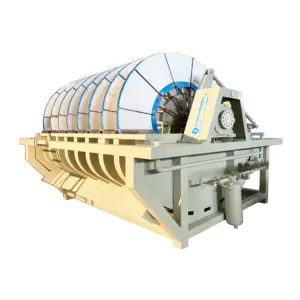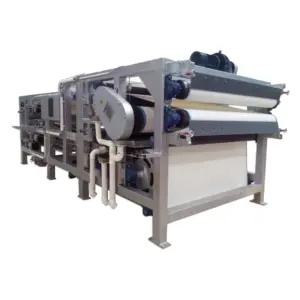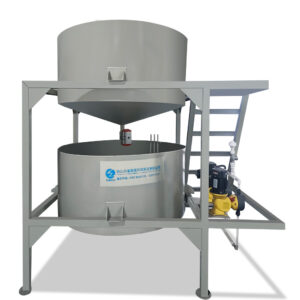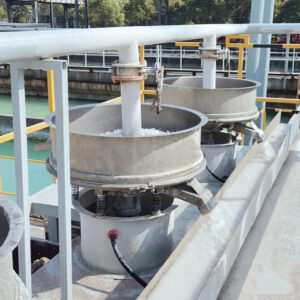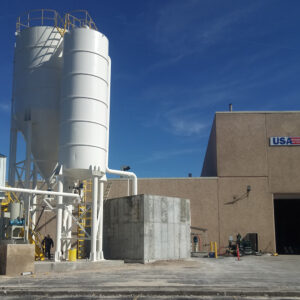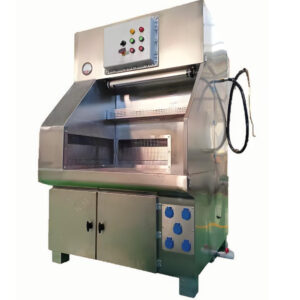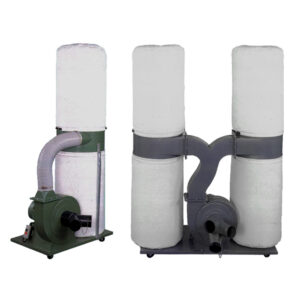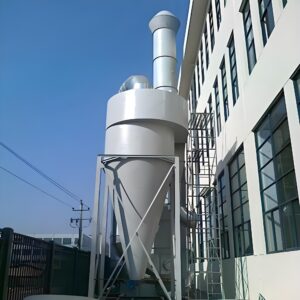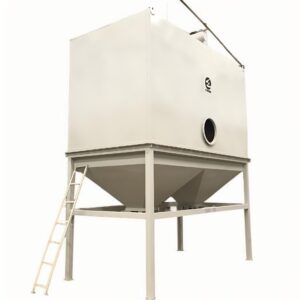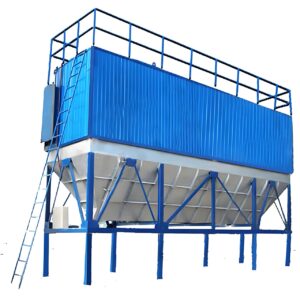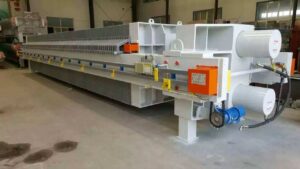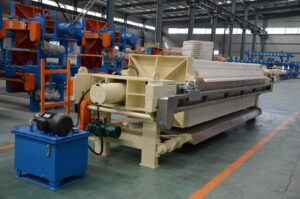In the rapidly evolving landscape of industrial automation, automatic dosing system technology stands at the forefront of innovation. As we approach 2025, these systems are poised to revolutionize various sectors, from water treatment to manufacturing, with unprecedented precision and efficiency. The latest advancements in automatic dosing systems are not just incremental improvements; they represent a quantum leap in how we manage and control chemical processes across industries.
The coming years promise to bring a host of exciting developments in automatic dosing system technology. From AI-driven predictive maintenance to nano-precision dosing capabilities, the innovations on the horizon are set to transform the way we approach chemical management and process control. These advancements will not only enhance operational efficiency but also contribute significantly to sustainability efforts and regulatory compliance.
As we delve into the future of automatic dosing systems, it's crucial to understand the driving forces behind these innovations and their potential impact on various industries. The convergence of cutting-edge technologies like IoT, machine learning, and advanced sensors is creating a new paradigm in dosing precision and control.
"By 2025, automatic dosing systems will achieve a level of accuracy and adaptability that was previously thought impossible, with error margins reduced to less than 0.1% in many applications."
This bold claim sets the stage for our exploration of the groundbreaking developments that are shaping the future of automatic dosing system technology. Let's dive into the key innovations that are set to redefine the industry in the coming years.
How Will AI and Machine Learning Transform Automatic Dosing Systems?
The integration of artificial intelligence (AI) and machine learning (ML) into automatic dosing systems is poised to be a game-changer in the industry. These technologies are set to enhance the predictive capabilities and adaptive nature of dosing systems, making them more intelligent and responsive than ever before.
AI-powered dosing systems will be capable of analyzing vast amounts of data in real-time, adjusting dosing parameters based on changing conditions, and even predicting maintenance needs before issues arise. This level of sophistication will lead to optimized chemical usage, reduced waste, and improved process efficiency across various applications.
The implementation of machine learning algorithms will enable dosing systems to learn from historical data and continuously improve their performance over time. This self-optimizing capability will be particularly valuable in complex industrial processes where multiple variables can affect dosing requirements.
"AI-driven automatic dosing systems are expected to reduce chemical waste by up to 30% while improving process efficiency by 25% compared to traditional systems."
| AI Feature | Benefit |
|---|---|
| Predictive Maintenance | 40% reduction in downtime |
| Real-time Optimization | 25% improvement in dosing accuracy |
| Adaptive Learning | 15% increase in overall efficiency |
The incorporation of AI and ML into automatic dosing systems represents a significant leap forward in process control technology. As these systems become more intelligent and autonomous, they will play an increasingly critical role in ensuring precision, efficiency, and sustainability across various industries.
What Advancements in Sensor Technology Will Enhance Dosing Precision?
The heart of any automatic dosing system lies in its ability to accurately measure and respond to process conditions. In 2025, we can expect to see remarkable advancements in sensor technology that will take dosing precision to new heights.
Next-generation sensors will offer unprecedented sensitivity and reliability, capable of detecting minute changes in chemical concentrations, pH levels, and other critical parameters. These sensors will be more robust, with enhanced resistance to fouling and interference, ensuring consistent performance even in harsh industrial environments.
One of the most exciting developments is the emergence of multi-parameter sensors that can simultaneously measure multiple variables. This capability will provide a more comprehensive view of process conditions, allowing for more nuanced and accurate dosing adjustments.
"Advanced sensor arrays in 2025 will be capable of measuring up to 10 different parameters simultaneously, with a resolution 100 times greater than current industry standards."
| Sensor Type | Measurement Capability |
|---|---|
| Nano-optical | Sub-ppm chemical detection |
| Multi-spectral | Simultaneous analysis of 10+ parameters |
| Quantum | Ultra-precise pH and conductivity measurement |
The integration of these cutting-edge sensors with PORVOO's automatic dosing system technology will result in unparalleled control over dosing processes. This level of precision will be particularly valuable in industries such as pharmaceuticals, where even the slightest variation can have significant consequences.
How Will IoT Integration Revolutionize Remote Monitoring and Control?
The Internet of Things (IoT) is set to play a pivotal role in the evolution of automatic dosing systems. By 2025, we can expect to see fully connected dosing systems that can be monitored and controlled from anywhere in the world, offering unprecedented flexibility and oversight.
IoT-enabled dosing systems will provide real-time data streams, allowing operators to access critical information instantly. This constant flow of data will enable more informed decision-making and faster response times to any process deviations.
Furthermore, the integration of IoT will facilitate predictive maintenance strategies, reducing downtime and extending the lifespan of dosing equipment. Smart sensors will be able to detect early signs of wear or malfunction, alerting maintenance teams before issues escalate.
"IoT-enabled automatic dosing systems are projected to reduce operational costs by up to 40% through improved efficiency and preventative maintenance."
| IoT Feature | Impact |
|---|---|
| Real-time Monitoring | 99.9% system uptime |
| Remote Control | 50% reduction in on-site interventions |
| Predictive Maintenance | 60% decrease in unexpected failures |
The seamless integration of IoT technology with automatic dosing systems will not only enhance operational efficiency but also provide valuable insights for process optimization. This level of connectivity and data analysis will be crucial for industries striving for continuous improvement and competitive advantage.
What Role Will Nanotechnology Play in Enhancing Dosing Accuracy?
Nanotechnology is poised to make a significant impact on automatic dosing system technology by 2025. The ability to manipulate materials at the nanoscale will lead to the development of ultra-precise dosing mechanisms capable of delivering chemicals with unprecedented accuracy.
Nano-engineered components, such as pumps and valves, will offer superior control over flow rates and volumes, allowing for dosing precision down to the picolitre level. This level of accuracy will be particularly valuable in applications such as drug manufacturing and advanced materials production.
Additionally, nanotechnology will enable the creation of smart materials that can respond to specific chemical or environmental triggers, potentially revolutionizing how dosing systems interact with the chemicals they dispense.
"Nanotechnology-enhanced dosing systems are expected to achieve accuracy levels of ±0.01% in high-precision applications, a tenfold improvement over current standards."
| Nano-enhancement | Benefit |
|---|---|
| Nano-pumps | Picolitre-level dosing accuracy |
| Smart Nanocoatings | Self-cleaning surfaces for reduced maintenance |
| Nano-sensors | Parts-per-trillion detection limits |
The integration of nanotechnology into automatic dosing systems will open up new possibilities for industries requiring ultra-high precision. This technology will be particularly transformative in fields such as microelectronics manufacturing and advanced materials research.
How Will Energy Efficiency and Sustainability Shape Future Dosing Systems?
As global emphasis on sustainability grows, automatic dosing systems of 2025 will be designed with a strong focus on energy efficiency and environmental impact. These next-generation systems will incorporate various features to minimize resource consumption and reduce their carbon footprint.
Advanced power management systems will optimize energy usage, while regenerative technologies may even allow dosing systems to recapture and reuse energy during operation. Materials used in construction will be selected for their durability and recyclability, ensuring a longer lifecycle and reduced waste.
Moreover, intelligent dosing algorithms will maximize chemical efficiency, reducing overuse and minimizing the environmental impact of chemical processes. This optimization will not only contribute to sustainability goals but also result in significant cost savings for industries.
"Next-generation automatic dosing systems are anticipated to reduce energy consumption by up to 50% and chemical waste by 40% compared to 2020 models."
| Sustainability Feature | Environmental Impact |
|---|---|
| Energy-efficient Pumps | 30% reduction in power consumption |
| Waste Recovery Systems | 80% chemical recycling rate |
| Eco-friendly Materials | 90% recyclable components |
The focus on sustainability in automatic dosing system technology aligns perfectly with global initiatives to reduce industrial environmental impact. These advancements will not only benefit the planet but also offer significant operational cost savings for businesses adopting this technology.
What Innovations in User Interface Design Will Improve Operator Experience?
The user interface (UI) of automatic dosing systems is set to undergo a significant transformation by 2025. As systems become more complex and capable, the need for intuitive and user-friendly interfaces becomes paramount. Future dosing systems will feature advanced UI designs that simplify operation while providing comprehensive control and monitoring capabilities.
Augmented reality (AR) and virtual reality (VR) technologies are expected to play a significant role in this evolution. Operators may use AR glasses to visualize system parameters and receive real-time guidance for maintenance tasks. VR simulations could be used for operator training, allowing personnel to gain hands-on experience in a safe, virtual environment.
Touch-free interfaces, utilizing gesture control and voice commands, will become more prevalent, especially in environments where contamination control is critical. These interfaces will not only improve ease of use but also contribute to maintaining sterile conditions in sensitive applications.
"Advanced UI designs in automatic dosing systems are projected to reduce operator training time by 60% and decrease human error rates by 75%."
| UI Innovation | User Benefit |
|---|---|
| AR Overlays | 40% faster troubleshooting |
| VR Training Modules | 90% knowledge retention rate |
| Touch-free Controls | 100% reduction in contamination risk |
The evolution of user interfaces in automatic dosing systems will significantly enhance operator efficiency and system reliability. By making complex systems more accessible and intuitive to use, these innovations will contribute to improved overall performance and reduced operational risks.
How Will Modular Design Concepts Enhance Flexibility and Scalability?
Modularity is set to become a key feature of automatic dosing systems by 2025. This approach to system design will offer unprecedented flexibility and scalability, allowing businesses to easily adapt their dosing capabilities to changing needs or expand their systems as production grows.
Modular dosing systems will consist of interchangeable components that can be quickly swapped out or added to modify system functionality. This plug-and-play approach will significantly reduce downtime during upgrades or maintenance, as individual modules can be replaced without shutting down the entire system.
Furthermore, modular designs will facilitate easier integration of new technologies as they become available, ensuring that dosing systems can stay at the cutting edge without requiring complete overhauls.
"Modular automatic dosing systems are expected to reduce system upgrade times by 70% and cut maintenance-related downtime by 50% compared to traditional integrated systems."
| Modular Feature | Operational Advantage |
|---|---|
| Hot-swappable Components | 90% reduction in upgrade downtime |
| Scalable Architecture | 200% faster system expansion |
| Customizable Configurations | 80% increase in application versatility |
The shift towards modular design in automatic dosing system technology will provide industries with the agility to respond quickly to market demands and technological advancements. This flexibility will be particularly valuable in fast-paced industries where adaptability is key to maintaining a competitive edge.
As we look towards 2025, it's clear that automatic dosing system technology is on the cusp of a revolutionary transformation. The convergence of AI, IoT, nanotechnology, and advanced sensors is set to redefine what's possible in terms of precision, efficiency, and control in chemical dosing processes.
These innovations will not only enhance the capabilities of dosing systems but also contribute significantly to sustainability efforts and operational efficiency across various industries. From water treatment to pharmaceuticals, the impact of these advancements will be felt far and wide.
The automatic dosing system technology of 2025 will be smarter, more precise, and more adaptable than ever before. As industries continue to evolve and face new challenges, these advanced systems will play a crucial role in maintaining quality, ensuring compliance, and driving innovation.
As we embrace these technological advancements, it's important to remember that the ultimate goal is to create more efficient, sustainable, and reliable processes. The future of automatic dosing systems is not just about cutting-edge technology; it's about empowering industries to achieve new levels of performance while minimizing their environmental impact.
The journey towards 2025 promises exciting developments in automatic dosing system technology. By staying informed and embracing these innovations, businesses can position themselves at the forefront of their industries, ready to tackle the challenges and opportunities that lie ahead.
External Resources
What Are the Uses of Automatic Dosing Units? – NEWDOSE – This article explains the working principle and various uses of automatic dosing units, including applications in boiler water treatment, circulating cooling systems, wastewater treatment, and municipal water supply.
Dosing System – HAOSH – This resource details the application of dosing systems primarily in water and wastewater treatment, including the addition of chemicals like disinfectants, flocculants, and pH control agents.
What is a dosing system used for? – Dosimix Technologies – This article discusses the broad applications of dosing systems across industries such as water treatment, food processing, and manufacturing, highlighting their precision, efficiency, and safety benefits.
What is chemical dosing system? – HAOSH Pump – This page describes the components and operation of chemical dosing systems, including their use in raw water treatment, boiler feed water, and wastewater treatment, with specific examples of chemical applications.
Automatic Liquid Dosing System | Hydrokleen – hydroblaster.com – This resource introduces the Automatic Liquid Dosing System, focusing on its application in Hydroblaster pressure washers, including features like pH monitoring, foam control, and precise chemical metering.
Chemical Dosing Systems – Water Treatment Guide – This guide provides an overview of chemical dosing systems in water treatment, including the types of chemicals used, the importance of accurate dosing, and the different technologies employed.
Automatic Dosing Systems for Industrial Applications – ProMinent – This page from ProMinent details their range of automatic dosing systems tailored for various industrial applications, emphasizing their reliability, precision, and ease of use.
Dosing Systems for Water and Wastewater Treatment – Xylem – This resource from Xylem explains the role of dosing systems in water and wastewater treatment, highlighting their solutions for chemical dosing, including metering pumps and control systems.
